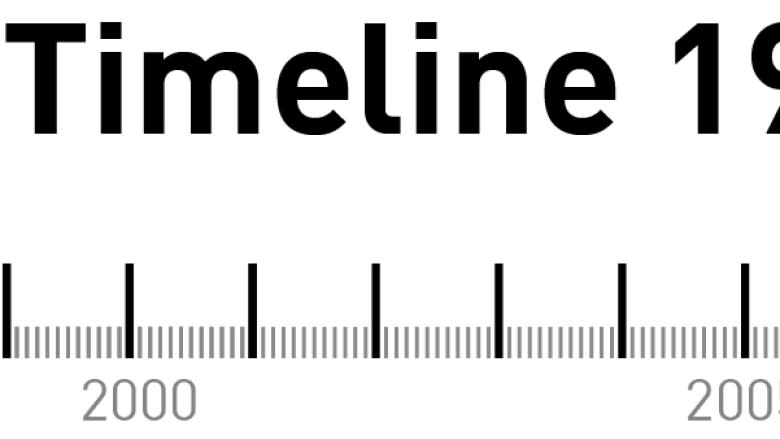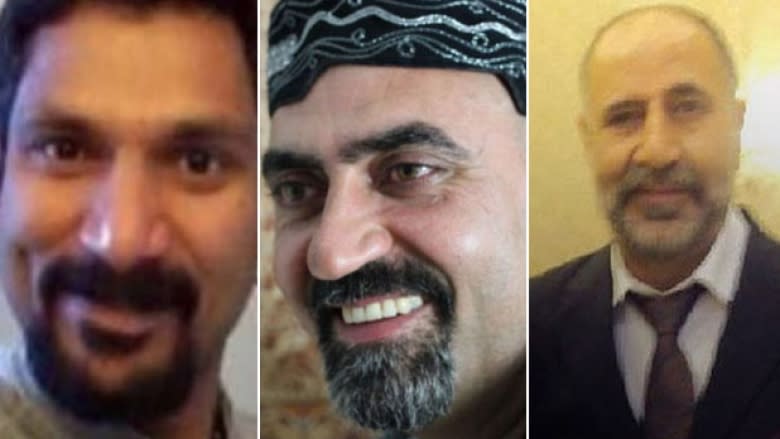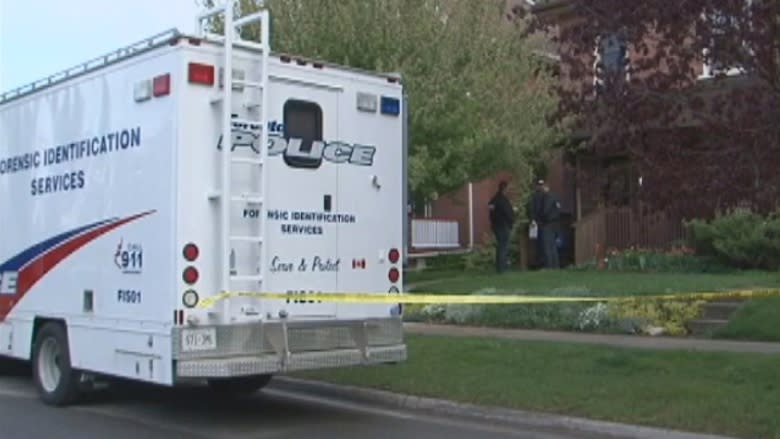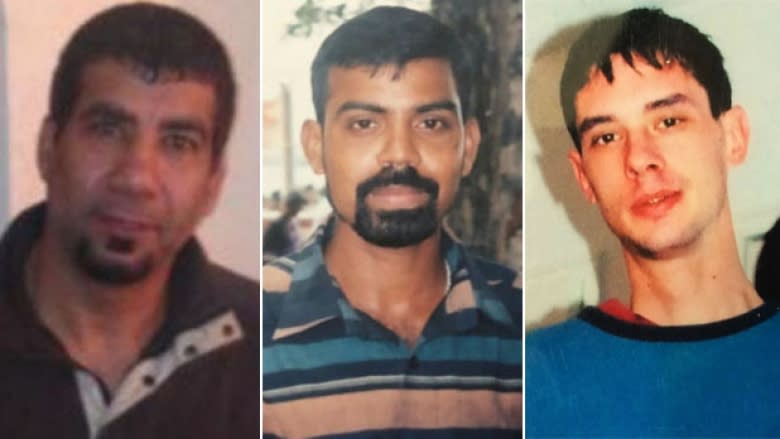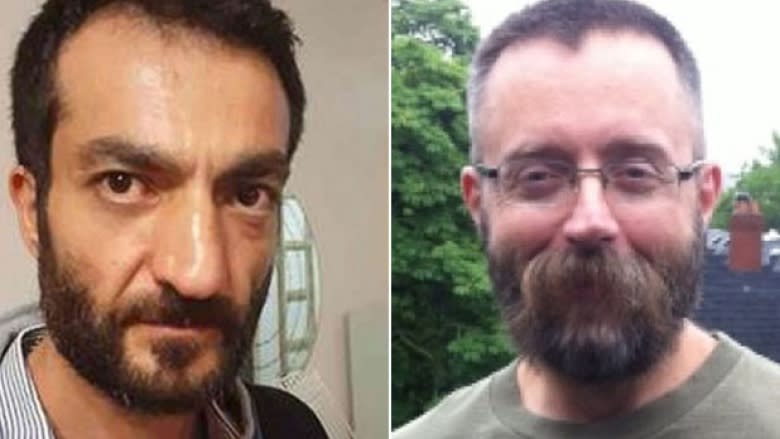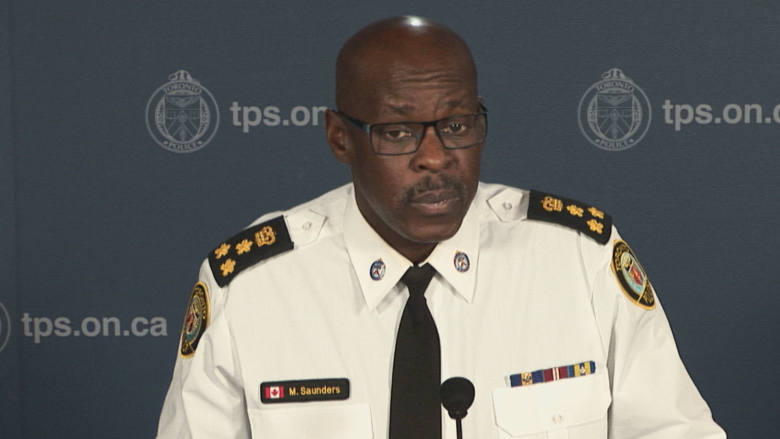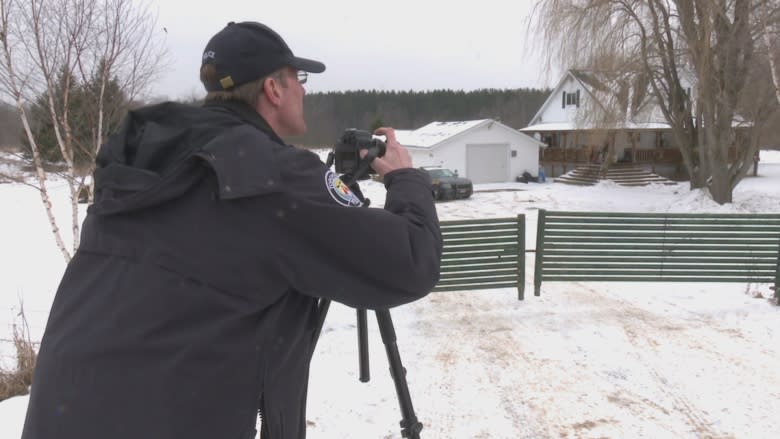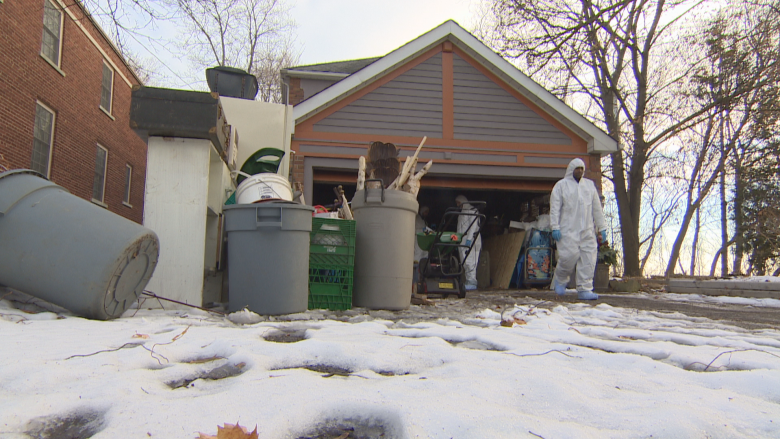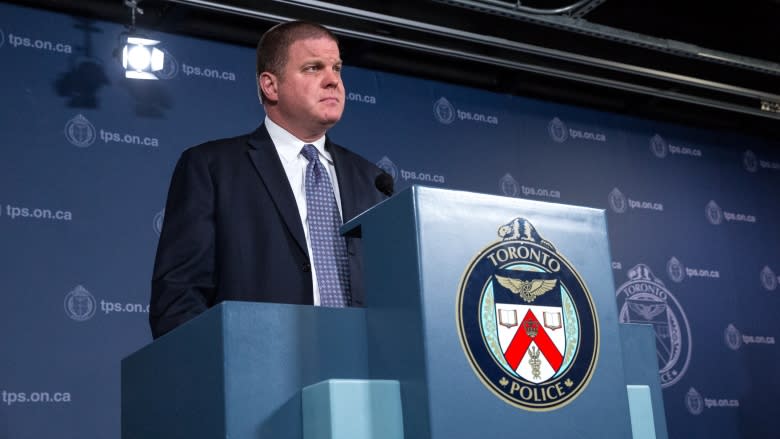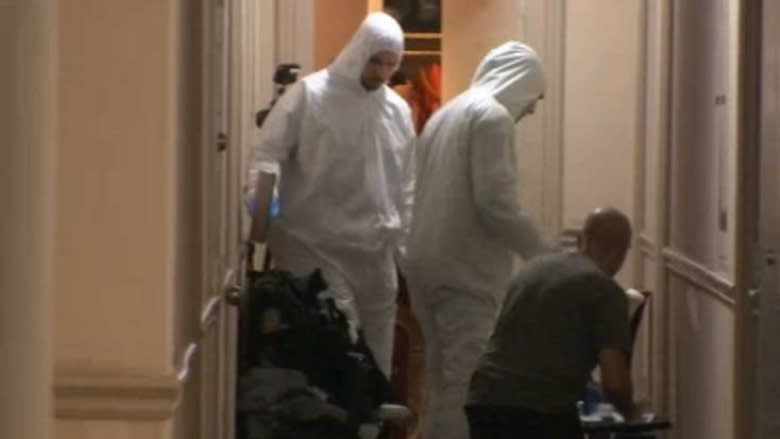From Project Houston to Bruce McArthur's arrest: a timeline of what we know so far
Six months after Bruce McArthur's arrest, unsealed warrant information and exhibits from his earlier assault case have revealed new details about the alleged serial killer and police investigations into missing men from Toronto's Gay Village and beyond.
CBC Toronto and other media outlets are in court fighting to unseal more than 88 judicial orders obtained by investigators in Project Houston and Project Prism.
The task forces were created to probe the disappearances of Skandaraj Navaratnam, Abdulbasir Faizi and Majeed Kayhan between 2010 and 2012 and then Selim Esen and Andrew Kinsman in 2017.
The timeline below includes the information that has been unsealed from the investigations, exhibits from McArthur's assault case and most of CBC Toronto's reporting so far.
Late 1990s: Bruce McArthur begins a relationship with a married man "towards the end of his [own] marriage," according to the pre-sentence report for McArthur's assault conviction. The men stay together for four years.
1998: McArthur moves to Toronto after leaving his marriage.
1999: McArthur sees a psychiatrist "as a result of difficulties coping with the breakup of his marriage and his first gay relationship," according to the pre-sentence report from his assault conviction.
That same year McArthur also meets Skandaraj Navaratnam.
December 2000: McArthur and his wife sell their house in Oshawa.
Early 2000s: McArthur and Navaratnam are in a relationship at some point during this time.
McArthur assault conviction
Oct. 31, 2001: McArthur assaults a man with a metal pipe in the man's home. McArthur turns himself in to police. Throughout the case, McArthur maintains that he blacked out before the assault and doesn't know why he did it.
Jan. 29, 2003: McArthur pleads guilty to one count of assault causing bodily harm and assault with a weapon.
March 19, 2003: Dr. Marie-France Dionne writes a psychological report about McArthur at the request of his lawyer to find out if a mental health issue could have led to the assault.
In the report the psychiatrist found "no sign of mental health problems" that could have contributed to the incident, and offered no other explanation for the assault.
Dionne writes that McArthur has a "very minimal" risk for violence, and in terms of personality, she characterizes him as a "passive and indecisive" man who seeks "to maintain an image of being a proper and cooperative person, prone to behaving correctly and modestly."
April 11, 2003: McArthur is sentenced to one count of assault causing bodily harm and assault with a weapon.
The Crown and McArthur's lawyer enters a joint submission for a conditional sentence. Court transcripts show the Crown thinks, "it wouldn't be in society's interest or Mr. McArthur's interest to have him go into jail at this point in time."
Instead McArthur serves his two years less a day sentence in the community with restrictions like a ban on visiting the Gay Village, being in the company of a male prostitute and a 10-year weapons prohibition. McArthur is also ordered to attend counselling for anger management and provide a DNA sample.
3 men go missing from the Gay Village
Sept. 6, 2010: Skandaraj Navaratnam, 40, is last seen leaving Zipperz nightclub, near Church and Carlton streets, with an unknown man around 2 a.m.
Sept. 16, 2010: Navaratnam is reported missing by a friend.
Dec. 29, 2010: Abdulbasir Faizi, 44, calls his wife and tells her he is at work with co-workers and will be home later that night. His last known location is in the Church and Wellesley street area of Toronto's Gay Village. Faizi's wife reports him missing to Peel Regional Police.
Jan. 4, 2011: Police discover Faizi's 2002 Nissan Sentra abandoned on Moore Avenue, in the area of St. Clair Avenue East and Mount Pleasant Road.
It's just a short drive from the home on Mallory Crescent where McArthur stores his tools and where planters with the remains of his alleged victims are later recovered.
Oct. 18, 2012: Majeed Kayhan, 58, is last seen by a friend in the area of Alexander and Yonge streets.
Oct. 25, 2012: Kayhan is reported missing by his adult son.
November 2012: Police create Project Houston, a task force, to probe the disappearances of Navaratnam, Faizi and Kayhan.
Dec. 17, 2012: Police obtain the first judicial order of Project Houston, a tracking warrant for a vehicle. Like all of the warrants in the investigation, police obtain an order sealing the tracking warrant from the public.
The investigator has to provide the court reasons why the warrant should be sealed. Those reasons include protecting a confidential source and one underage victim. The task force obtains about 40 more warrants before it gets shut down in April 2014.
Police chase dead end suspect
Dec. 20, 2012: Police obtain a general warrant for a residence in London, Ont., owned by James Alex Brunton. A general warrant gives police the power to "use any device or investigative technique, or procedure" to do whatever is described in the warrant that would normally be considered an unreasonable search and seizure.
The task force investigates Brunton as a murder suspect in the disappearance of Skandaraj Navaratnam.
At least six other Project Houston judicial orders are obtained in connection to Brunton by Project Houston. In the end Brunton is not connected to Navaratnam, but pleads guilty to child pornography charges in January 2014.
Police refuse to confirm whether or not they spoke with McArthur in this period, although they were aware of his relationship with Navaratnam.
Sept. 23, 2013: The final judicial orders of Project Houston are obtained.
April 2014: Police shut down Project Houston after 18 months because they can't find any criminal evidence.
Police interview McArthur
2014-2017: Toronto police talk to McArthur as part of a divisional investigation that is not connected to either Project Houston or Project Prism at some point during this time.
The Toronto police professional standards unit has since launched an internal investigation into the matter.
More men go missing, some unreported
Aug. 15, 2015: Soroush Mahmudi, 50, is last seen near his apartment building on Markham Road in Scarborough around noon. His family report him missing later that day.
August 2015: The family of Kirushna Kumar Kanagaratnam, 37, last spoke to him by phone from their home in Sri Lanka.
September-December 2015: Police believe Kanagaratnam was killed at some point during this time period. His family never reported Kanagaratnam missing because they thought he was in hiding after the Canadian government rejected his refugee application.
2016-2017: Police believe Dean Lisowick, 47, was killed at some point during this time period. Unlike most of the other victims, Lisowick was never reported missing.
Project Prism
April 16, 2017: Selim Esen, 44, is last seen near Yonge and Bloor streets.
April 30, 2017: Esen is reported missing.
June 26, 2017: Andrew Kinsman, 49, is last seen in Cabbagetown a day after Toronto's annual Pride parade.
June 29, 2017: Kinsman is reported missing. Police later said a crucial piece of evidence was uncovered because Kinsman was reported missing within 72 hours. Investigators hinted that without that evidence McArthur might still be free.
August 2017: Police establish Project Prism task force to probe the disappearances of Esen and Kinsman.
Aug. 16-17, 2017: The first two judicial orders are made for Project Prism. One is a production order for Google and the other is a production order for Rogers Communication.
A production order gives police the power to compel a person or organization to provide documents or records. It's not clear whether or not these orders are related to McArthur.
Since those first two, the task force obtains another 22 production orders, including ones for banking and phone records and Highway 407 usage.
Police eye McArthur
Sept. 8, 2017: For the first time in the investigation, police use Bruce McArthur's name in their request to seal a production order for Bell Canada.
Sept. 14, 2017: Police obtain a tracking warrant "for vehicles" as part of Project Prism. The request for sealing mentions "the investigation into Bruce McArthur."
Sept. 16, 2017: McArthur sells an old, rusty, maroon-coloured Dodge Caravan to Dom's Auto Parts, an auto parts shop outside Toronto.
Oct. 3, 2017: Police visit Dom's Auto Parts looking for the maroon-coloured Dodge Caravan. Investigators comb through surveillance footage and tow away the vehicle. The owner of the shop tells CBC Toronto that police found blood in the van.
Nov. 2, 2017: Investigators obtain the first of six tracking warrants they'd request between the beginning of November and McArthur's arrest. Most of the orders refer to "an investigation into Bruce McArthur" in their reasons for sealing. The tracking warrants apply to individuals, "things" and vehicles.
Dec. 4, 2017: Police obtain a general warrant for McArthur's apartment. The order also applies to two other addresses, which are still under seal for investigative reasons.
Police say no evidence of serial killer
Dec. 8, 2017: In a news conference, police tell the public they have no evidence of a serial killer operating in the Gay Village.
Jan. 17, 2018: Police uncover two pieces of crucial evidence linking McArthur to Esen and Kinsman's disappearances.
McArthur arrested, charged with 1st-degree murder
Jan. 18, 2018: Police arrest McArthur after investigators observe a man entering his Thorncliffe Park apartment in the morning. When officers forcibly enter the apartment to arrest McArthur, they find the man in restraints. It is believed the man went to McArthur's seeking a sexual encounter.
McArthur is then charged with first-degree murder in the deaths of Esen and Kinsman, even though the men's bodies have yet to be found. In a news conference, police reveal that Kinsman and McArthur had been in a sexual relationship for "some time."
Investigators also says they had secured five properties connected to McArthur. Those properties include McArthur's apartment, which police obtained a search warrant for, a house connected to a friend of McArthur's in Scarborough, another property connected to that friend in Madoc, Ont., a house in midtown Toronto where McArthur worked as a landscaper and another address in Toronto.
Police also obtain search warrants for four motor vehicles and two addresses that remain sealed, but could be among the properties listed above.
Jan. 21-26, 2018: Police obtain a search warrant for a house on Mallory Crescent in midtown Toronto, where McArthur worked as a landscaper and stored tools. Investigators also get search warrants for their own buildings like Forensic Identification Services and 33 Division.
Remains found in large planters
Jan. 29, 2018: McArthur is charged with three additional counts of first-degree murder in the deaths of Majeed Kayhan, Soroush Mahmudi and Dean Lisowick.
Police also reveal they discovered dismembered remains in the bottom of large planters at the house on Mallory Crescent. Investigators call McArthur a serial killer for the first time.
Feb. 8, 2018: Police say they've identified the remains of Andrew Kinsman from the large planters seized from the house on Mallory Crescent.
Feb. 23, 2018: McArthur is charged with first-degree murder in the death of Skandaraj Navaratnam. Police identified Navaratnam's remains from one of the large planters seized from the Mallory Crescent house where McArthur stored landscaping equipment.
March 7, 2018: Police obtain a general warrant for an unspecified thing or address in the last of the judicial orders CBC Toronto and other media outlets currently have access to. More judicial orders have been issued since, but they remain sealed.
April 11, 2018: McArthur is charged with first-degree murder in the death of Abdulbasir Faizi. Police believe the two knew each other. In a news conference police also tell reporters they've identified three more sets of remains from the planters belonging to Selim Esen, Dean Lisowick and Faizi.
McArthur charged with 8th count of murder
April 16, 2018: McArthur is charged with first-degree murder in the death of Kirushna Kumar Kanagaratnam. His remains are identified from planters along with six other men McArthur is accused of killing. Police had previously released a deceased photo of Kanagaratnam as a last resort to identify him.
May 7, 2018: Since the ground thawed, police send out teams of cadaver dogs this week to roughly 100 properties linked to McArthur. Investigators do not disclose the addresses, but say the properties they'd searched were sites where McArthur worked as a landscaper.
May 15, 2018: Police finish an inch-by-inch search of McArthur's apartment. Investigators collect more than 1,800 pieces of evidence from the apartment in what they call the "largest forensic examination" in Toronto police history.
June 1, 2018:Police canine units finish their searches of roughly 100 properties connected to McArthur, including the Mallory Crescent home, where investigators find the remains of seven men in large planters. Police say they need to do some follow-up investigating before deciding if there will be further searches at some of the properties.
Police dig up more human remains
July 4, 2018: Police begin excavating the forested ravine behind the Mallory Crescent home where McArthur worked as a landscaper, and the remains of seven of the men he's charged with murdering were found in planters.
Black bags were seen being loaded into a coroner's van at the property. The next day police confirmed they'd found more human remains in the forested ravine area.
July 12, 2018: Police complete their excavation of the forested ravine area behind the Mallory Crescent home. Investigators say they dug up human remains nearly every day they were there.
July 20, 2018: In a news conference, police say they've identified the remains of Majeed Kayhan from the evidence they uncovered in the ravine area behind the Mallory Crescent home where McArthur worked as a landscaper.
Kayhan was the only alleged McArthur victim whose remains had yet to be found.
Police had previously identified the remains of Skandaraj Navaratnam, Andrew Kinsman, Selim Esen, Abdulbasir Faizi, Kirushna Kumar Kanagaratnam, Dean Lisowick, and Soroush Mahmudi from planters stored on the Mallory Crescent property.
At the news conference, lead investigator Hank Idsinga said police have no reason to believe they will find the remains of any other possible victims at any of the roughly 100 properties they've searched across the Greater Toronto Area since January.
Idsinga also said investigators continue to review cold-case files and missing-persons cases dating back to the 1970s and 1980s.

